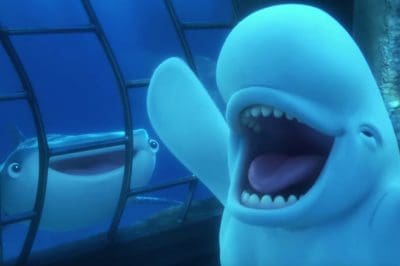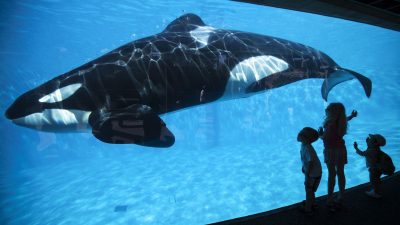
Public outcry directed at SeaWorld and its captivity practices has increased dramatically in recent years as facts about Orca behaviors in captivity versus in the wild have spread and become more well-known.
One film in particular that caused outrage and sparked a debate was Blackfish, a documentary that revealed the true nature of Orcas in the wild and how vastly different and miserable their lives are within the confines of SeaWorld’s walls. Not only is their space significantly smaller, but the breeding, child-rearing, emotional distress and much more was brought to light and called into question when this documentary was released.
As a result, attitudes towards SeaWorld and other marine animal parks shifted, causing the writers of Finding Dory, the long-anticipated sequel to Finding Nemo, to rethink the content of the feature film and even rewrite the ending.
Without giving away too much of the plot, it’s important to know that the setting of the film is mostly set in the Marine Life Institute, where “rescued” wild animals are housed.
As Dory sets out to convince the animals there that being free in the ocean is better than living in captivity, the animals begin to regain their confidence in their ability to survive in the wild.
One particularly insecure animal, a whale shark named Destiny, expresses her concern at not being able to swim properly because she spends most of her time hitting her head against the walls of her tank.
A beluga whale named Bailey, who is attempting to overcome her own fears of the ocean, reminds Destiny that:
“There are no walls in the ocean.”
The message is short but powerful.

Though the movie never names SeaWorld and refrains from outright condemning aquariums or similar marine animal exhibits, it does send the message that enclosures are no place for wild animals.
Being in captivity interferes with an animal’s natural processes, such as echolocation and swimming patterns, on top of the fact that it severely limits the space they’re given to move around.
It’s because of films like Blackfish and the public’s willingness to fight for the freedom of wild animals such as Orcas that Finding Dory‘s story was rewritten to include a jab at SeaWorld.
Although it is amazing that SeaWorld recently announced the end of their breeding program for Orcas, meaning these whales will eventually not be a part of the park at all, this gesture is simply not enough to solve the overarching problem.
The international marine animal park has cultivated a culture of unnecessary captivity of animals purely for entertainment and profit and spread lies about their practices and animal behavior to mislead the public into believing that what they were doing was natural.
Their move to stop the breeding program was not motivated by compassion but rather by the drop in visitors and therefore profit caused by the backlash against their captive Orcas.
Blackfish may have been a catalyst in propelling forward the anti-captivity sentiment, but it’s films like Finding Dory that keep this movement going. As the next generation grows up learning about the need for wild animals to be free in their childhood movies, there’s hope that compassion for animals can take precedent over profit and the cruelty can come to an end.
What do you think about Finding Dory’s message about captivity? Please comment on, like, and share this article!
This article (‘Finding Dory’ Beluga Whale Disses SeaWorld With A Simple Message) is free and open source. You have permission to republish this article under a Creative Commons license with attribution to the author andTrueActivist.com


